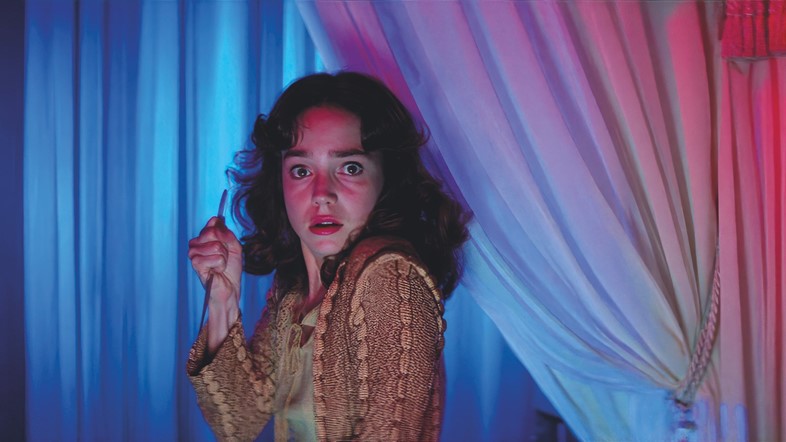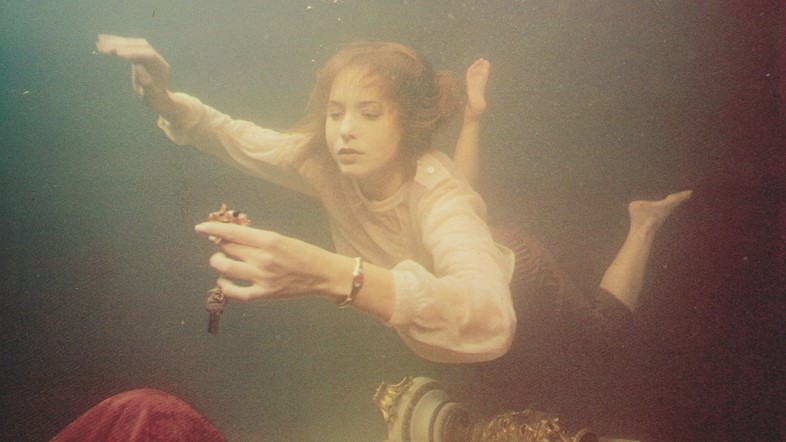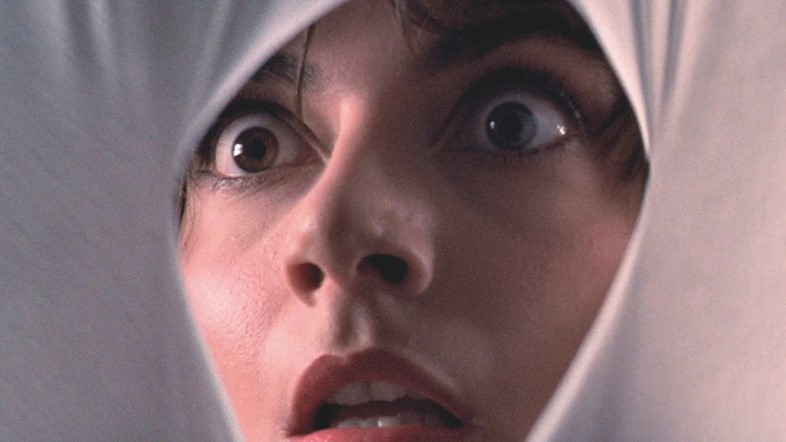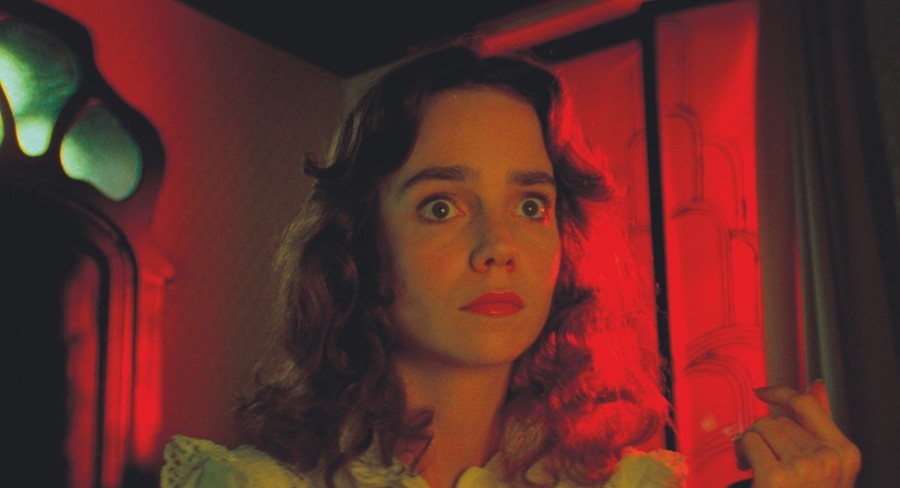As the BFI presents 17 new 4K restorations of the director’s films as part of the month-long season Dario Argento: Doors Into Darkness, James Balmont provides a brief introduction to his illustrious career
Some call him the “Master of Horror”. To others, he’s “the Italian Hitchcock”. Whatever he is, Dario Argento – director of Suspiria, Deep Red, and much more – remains one of the most iconic filmmakers to emerge from Italy’s genre filmmaking heyday. And with a month-long retrospective of his work arriving in London this month, there’s never been a better time to get reacquainted.
After starting out as a screenwriter – co-writing Sergio Leone’s spaghetti western masterwork Once Upon a Time in the West in 1966; and later collaborating with George A Romero on Dawn of the Dead in 1978 – Argento became a paragon of the giallo sub-genre in Italy in the early 70s, blending psychological thriller, horror, and murder mystery elements together in a series of early directorial efforts.
He became regarded for his meticulous camerawork and attention to detail in films like The Bird with the Crystal Plumage and Four Flies on Grey Velvet, as an outlandish use of colour and music further defined his craft as it took a turn for the supernatural thereafter. Soon famed for his visual trickery, sumptuous production design, and extravagant set pieces, his sensory brand of shock filmmaking would influence everyone from John Carpenter (Halloween) and David Cronenberg (The Fly) – as Argento’s violent proto-slashers foreshadowed a wave of copycats in the US.
Few would come close to the meticulous and “maniacal” attention to detail that Argento achieved during the peak of his powers (a facet effectively embodied by his frequent cameos as the killer’s hands in his own films), with his unique artistic vision today responsible for some of the most iconic Italian films of all-time. Such merits are all on full display this May, as the BFI presents 17 (!) new 4K restorations of the director’s films as part of the month-long season Dario Argento: Doors Into Darkness – which also welcomes the director back to London for a series of film talks and introductions.
Find out where to start with his illustrious career below.

Deep Red, 1975
In this defining work of the giallo genre, English jazz pianist Marcus Daly (David Hemmings, Blow-Up) witnesses a brutal murder at the hands of a cloaked figure at an apartment in Turin. After an investigation of the crime scene proves fruitless, Marcus begins to suspect that the setting may have been tampered with – and so begins a gripping mystery involving peeping eyeballs, children’s nursery rhymes, and a spate of grisly murders.
Deep Red (aka Profondo Rosso) marked the dawn of the golden age of Argento – defined by gory special effects, bold use of colour, and voyeuristic camerawork that frequently occupies the unseen killer’s point of view. The score – built on wild, arpeggiated synths and outrageous bass lines – meanwhile, would be the first of many collaborations between Argento and prog-rock titans Goblin, who were approached after Pink Floyd proved unavailable.

Suspiria, 1977
When Luca Guadagnino (Call Me By Your Name) opted to remake Suspiria in 2018 (with Dakota Johnson, Tilda Swinton, and Mia Goth among the cast, all of whom appeared on the cover of AnOther Magazine to coincide with the release of the film) the question on everyone’s lips was why? The original, one of the most distinctive works in horror history, was widely considered an untouchable apogee of the genre. Unsurprisingly, Guadagnino’s “homage” was divisive upon release; a box office bomb. The reputation of Argento’s 1977 classic, on the other hand, remains untouchable – and for good reason.
An audiovisual assault of the most phantasmagorical order, Suspiria follows a young ballet student (Jessica Harper) to a prestigious dance school in Germany where strange incidents occur. After several students are mutilated, a malevolent force is revealed among their ranks – and soon, an entire occult conspiracy is unveiled in a hallucinogenic nightmare of geometric patterns, stained glass windows, and red-paint-blood. It’s a legendary spectacle – made all the more ominous by Goblin’s spectral, chiming score.

Inferno, 1980
No plot, just vibes: this baroque follow-up to Suspiria remains a wild card in Argento’s catalogue. Despite an imaginative premise involving witches, cats and a bittersweet stench, Inferno’s narrative is broadly confusing and arguably impenetrable. The music, by Keith Emerson, failed to reach the audacious heights that Goblin achieved elsewhere. And the production was hampered by the director’s poor health after he became severely sick with hepatitis. The finished film failed to match the acclaim of its grandiose predecessor, and barely even managed a cinematic release in the US.
For all its flaws (somewhat masked by the film’s rich, saturated red-blue colour palette) there are moments to savour: a floating corpse encounter in a flooded cellar; a faceless figure lurking in a library; an absurdly drawn-out set piece in New York’s Central Park. The fiery denouement, meanwhile, sums up the film well: it’s chaos, but strangely spellbinding.

Tenebrae, 1982
After the troublesome Inferno, Argento returned to giallo with a new subversion of the genre in mind. Inspired by personal experiences after an obsessed fan harassed and threatened to kill him, the director went meta in Tenebrae with the story of a horror novelist whose writing inspires a murder spree (a plot later recycled in Paul Verhoeven’s Basic Instinct) – with events taking place in an eerily sterile Rome marked by pastel-coloured fashions and modernist architecture.
The film is littered with doppelgängers, visual symmetry, and scene repetition that feeds into the core theme of duplicity. But Tenebrae is also remarkable for its impressive and dynamic crane and tracking shots – which amplify some truly shocking kill scenes. One sequence, in which a woman’s arm is cleaved straight off with an axe, proved particularly controversial – and was a key reason for the film being banned as a “video nasty” in the UK in the mid-80s.
It didn’t receive a fully uncut release here until some 20 years later, in 2003 – by which point the synth-dominated score was on the cusp of establishing its own fresh legacy. French electro band Justice would heavily sample Goblin’s main theme from Tenebrae for key track Phantom in 2007, with debut album Cross going on to receive multiple Grammy nominations that year.

Phenomena, 1985
In the alpine countryside of Switzerland, a girl takes refuge in a chalet after missing the last bus home. Eight months later, her severed head is found – crawling with maggots. Entomologist John McGregor (Donald Pleasance, Halloween) investigates the case as a spate of killings rocks a nearby boarding school – meeting a young girl named Jennifer (13-year-old Jennifer Connelly), who displays a remarkable penchant for insects herself, in the process.
Phenomena, in many ways, marks the confluence of the two core factions of Argento’s directorial output heretofore. Jennifer’s telekinetic powers, and the film’s vivid use of saturated blues, hark to the supernatural psychedelia of Suspiria and Inferno. But the whodunnit narrative is emblematic of the classic giallo of Deep Red or The Bird with the Crystal Plumage. Either way, breathtaking cinematography that captures rolling valleys, crystalline waterfalls, and mountainous backdrops ensures a personality unique from Argento’s prior works.
It was a major hit in Italy, where it was released uncut – full of images of rotting corpses, writhing insects, and allusions to “the lord of the flies”. In the US and the UK, however, over 20 minutes of footage was butchered, resulting in middling reviews – though a buzzing respect for its audacious style, bizarre twists and shocking set pieces defines Phenomena’s legacy today.

Opera, 1987
With funding for Italian film production drying up as killer American franchises like A Nightmare On Elm Street gained popularity, the end of the golden age of giallo cinema was nigh in the late 80s. With that, Argento’s career would take a turn for the questionable hereafter – but not before one final masterwork in the shape of the grand slasher showpiece Opera.
The opening (like much of the film) takes place in the extravagant Teatro Regio opera house in Parma, where a lavish performance of Verdi’s Macbeth takes place before a bustle of onlookers. As disorientating crane shots capture the opulence of the venue, a murder of ravens caws; meanwhile, a voyeur stalks the corridors backstage, unnoticed. As anticipation builds, the stage is set – for a terrible crime to take place behind the scenes.
It’s one of the great set-ups in Argento’s catalogue – and, with intricate costumes, rich architecture, and spoils of gleaming jewellery, Opera stands out for its lavish visual character, which is only exacerbated by an ethereal, dream-like score. Of course, the elaborate kill scenes and visceral torture devices do plenty to puncture through this fantasy – and while it’s perhaps not the most well-known of Argento’s works, Opera can’t be overlooked.
Dario Argento: Doors into Darkness is at BFI Southbank in May; selected films in the Argento season are available on BFI Player.
